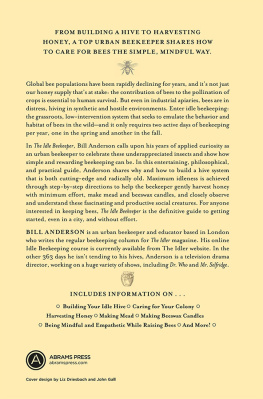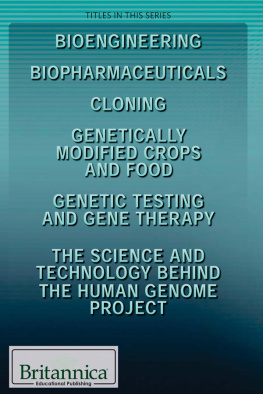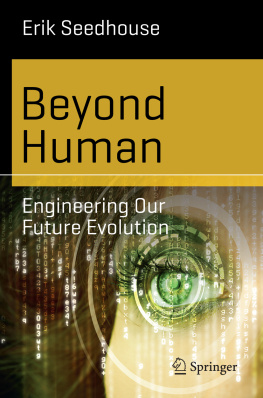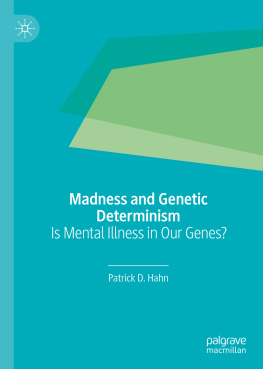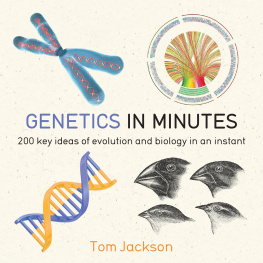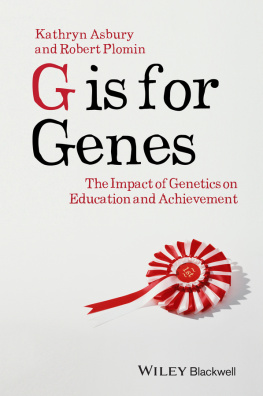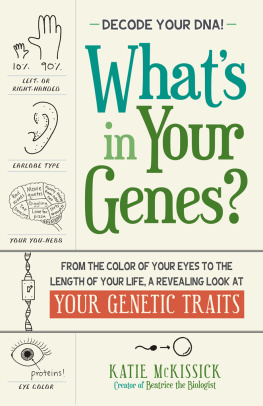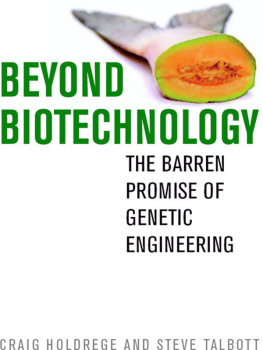A Closer Look at
GENES AND GENETIC ENGINEERING
INTRODUCTION TO BIOLOGY
A Closer Look at
GENES AND GENETIC ENGINEERING
Edited by Michael Anderson

Published in 2012 by Britannica Educational Publishing
(a trademark of Encyclopdia Britannica, Inc.)
in association with Rosen Educational Services, LLC
29 East 21st Street, New York, NY 10010.
Copyright 2012 Encyclopdia Britannica, Inc. Britannica, Encyclopdia Britannica, and the Thistle logo are registered trademarks of Encyclopdia Britannica, Inc. All rights reserved.
Rosen Educational Services materials copyright 2012 Rosen Educational Services, LLC.
All rights reserved.
Distributed exclusively by Rosen Educational Services.
For a listing of additional Britannica Educational Publishing titles, call toll free (800) 237-9932.
First Edition
Britannica Educational Publishing
Michael I. Levy: Executive Editor, Encyclopdia Britannica
J.E. Luebering: Director, Core Reference Group, Encyclopdia Britannica
Adam Augustyn: Assistant Manager, Encyclopdia Britannica
Anthony L. Green: Editor, Comptons by Britannica
Michael Anderson: Senior Editor, Comptons by Britannica
Sherman Hollar: Associate Editor, Comptons by Britannica
Marilyn L. Barton: Senior Coordinator, Production Control
Steven Bosco: Director, Editorial Technologies
Lisa S. Braucher: Senior Producer and Data Editor
Yvette Charboneau: Senior Copy Editor
Kathy Nakamura: Manager, Media Acquisition
Rosen Educational Services
Heather M. Moore Niver: Editor
Nelson S: Art Director
Cindy Reiman: Photography Manager
Karen Huang: Photo Researcher
Matthew Cauli: Designer, Cover Design
Introduction by Heather M. Moore Niver
Library of Congress Cataloging-in-Publication Data
A closer look at genes and genetic engineering / edited by Michael Anderson.
p. cm.(Introduction to biology)
In association with Britannica Educational Publishing, Rosen Educational Services.
Includes bibliographical references and index.
ISBN 978-1-61530-576-6 (eBook)
1. GenesJuvenile literature. 2. Genetic engineeringJuvenile literature. I. Anderson, Michael
(Michael J.), 1972
QH447.C56 2012
572.86dc22
2011007581
On the cover: A chromosome is a microscopic, threadlike part of the cell that carries hereditary information in the form of genes. Shutterstock.com
On the cover (background), back cover, page : DNA strands. Adrian Neal/Lifesize/Getty Images
Pages www.istockphoto.com/penfold; remaining interior background image www.istockphoto.com/Osuleo
CONTENTS


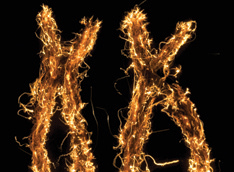
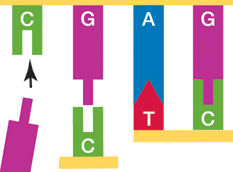

INTRODUCTION

M aybe you know someone who is the spitting image of someone else in the family. This is thanks to genes. Genetics, the study of genes, involves far more than family resemblances, though. A century after pioneering experiments revealed the role of genes in heredity, scientists learned that genetic engineeringthe manipulation of genescan be an important tool in medicine and agriculture. This book provides an overview of the history of genetics. It offers an explanation of how genes work as well as what can happen when genetic defects occur. It also explores some up-and-coming technologies that harness the power of genetic engineering.
People have known since ancient times that particular traits can be passed along from parent to offspring. How this occurred was long a mystery, though. Scientists proposed many theories through the years. One prevailing theory of the early 1800s was blending inheritance, which held that an organisms heritable traits are a combination of those in the parents. Charles Darwin used this theory to support his own theory of natural selection.
In the mid-1800s an Austrian monk named Gregor Mendel became the first person to show scientifically how specific characteristics pass from one generation to the next. Experimenting with garden peas, Mendel deduced that distinct hereditary units that passed from parent to offspring determined how traits were inherited. These units eventually became known as genes. By studying the humble pea plant, Mendel was able to demonstrate fundamental genetic principles such as segregation and independent assortment.
Biologists who followed in Mendels footsteps discovered how genes and chromosomes were related and, eventually, the role of DNA. In the early 1900s Thomas H. Morgan determined that genes are found on chromosomes, with each gene located at a specific site, and that patterns of inheritance are based on the position of genes on each chromosome. Morgan also verified that genes near one another on the same chromosome are apt to be inherited together.
Chromosomes are a collection of DNA and protein found in every living thing. Each gene has a specific place on a specific chromosome. Most organisms have two sets of paired chromosomes, with one set inherited from each parent. When cells reproduce, chromosomes carry genetic information from the parent cell to the newly produced daughter cells. Most cells reproduce through a process called mitosis. In mitosis one cell divides into two exact copies of itself. But gametes (sex cells) duplicate through meiosis, which involves two cell divisions. The first division produces two daughter cells with a full set of chromosomes. In the second division, however, the chromosomes do not duplicate, resulting in four daughter cells with only half as many chromosomes. The full set of chromosomes is restored when a male gamete, or sperm, combines with a female gamete, or egg, during fertilization.

In the United States, most commercially grown corn is genetically modified. Adam Gault/OJO Images/Getty Images
When defects occur in the genetic material, diseases known as genetic disorders result. The cause can be mutations, or alterations in the DNA sequence, of a single gene or defects in an entire chromosome. Single-gene disorders result from one or more mutations in a single gene that prevent it from acting properly. Chromosome disorders occur from structural defects in a chromosome or from having too many or too few chromosomes. Downs syndrome, for example, arises in people with an extra chromosome 21.
Genetic engineering involves the artificial manipulation of genes to change an organism. Biologists first began experimenting with this process in the 1960s. Initially, genetic engineering referred to any method used for modifying organisms though heredity and reproduction. This included artificial insemination and selective breeding. In modern science, however, the term refers specifically to the field of recombinant DNA technology. In this process, DNA from at least two sources is combined and then inserted into a host organism. There, the inserted DNA replicates and functions along with the DNA of the host.
Next page






